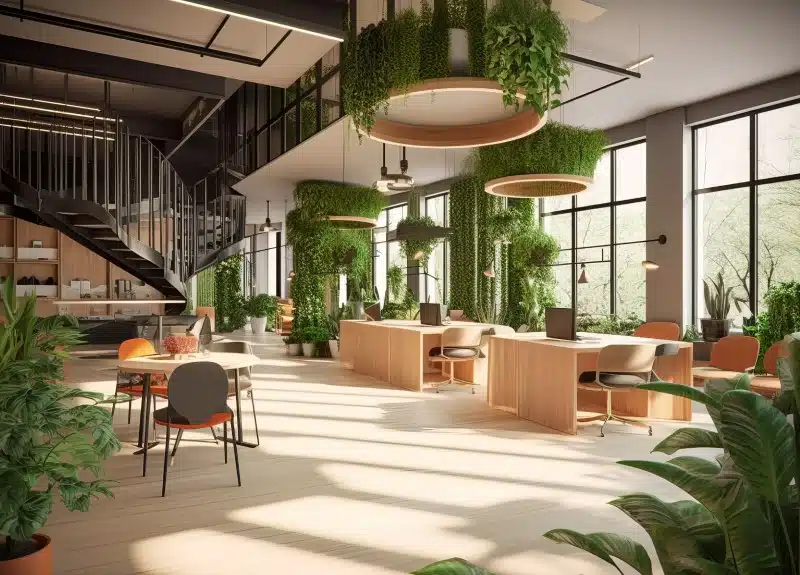
Biophilic design is a concept in architecture that incorporates natural elements into built environments, creating spaces that are more in tune with the natural world. Biophilic design has been shown to have a number of benefits, from improving mental health to increased productivity. In this blog, we’ll be exploring the many benefits of biophilic design in real estate.
One of the primary benefits of biophilic design is its ability to improve mental health. Studies have shown that exposure to nature can reduce stress, anxiety, and depression. Biophilic design incorporates natural elements such as plants, water features, and natural light, which can have a calming effect on the mind and body. In addition, biophilic design facilitates a connection to the natural world, which can be particularly beneficial in our modern world where we spend the majority of our time indoors. For a city like Vancouver where it rains for the better part of the year, bringing outdoor elements inside can keep us connected to nature while we stay dry.
Biophilic design also has the ability to increase productivity. Studies have shown that consistent exposure to nature can improve cognitive function, creativity, and concentration. Biophilic design can help to create a more stimulating and inspiring environment, which leads to increased levels of creativity and productivity. This is an especially useful design practice if you regularly work from home, and need to make changes to your environment – biophilic design makes for less distractions, and can invoke more inspiration for projects.
There are also a number of physical health benefits. Exposure to natural light has been shown to improve sleep quality, regulate circadian rhythms, and reduce the risk of health problems such as obesity and diabetes. In addition, biophilic design improves indoor air quality, which can be particularly important for individuals who suffer from respiratory issues such as asthma or allergies.
By incorporating natural elements into built environments, biophilic design can help to reduce the environmental impact of buildings. For example, plants can help to improve air quality and reduce energy consumption by providing natural insulation. In addition, biophilic design can help to create more sustainable buildings by incorporating green roofs, rain gardens, and other sustainable features.
Natural light is a key element of biophilic design. Not only does natural light provide a crucial source of Vitamin D, but it can also help regulate our circadian rhythm. When designing your home, be sure to consider the placement of windows and the amount of natural light your living space receives. If your home doesn’t receive a lot of sunlight, consider using soft artificial lighting that closely mimics natural light.
How Does This Tie into Real Estate?
Biophilic design is shown to have a direct impact on the perceived value of a property. Much like staging adds this same perceived value, natural elements such as plants, natural light, and water features make potential buyers more likely to view your property as desirable. This is because biophilic design is associated with a number of positive emotions, such as tranquility, relaxation, and happiness, which can help to create a more positive impression.
Biophilic design also has a tangible impact on value. Properties that incorporate natural elements are often more energy efficient, which can lead to lower utility costs and increased savings for the property owner. For example, a building with large windows that allow for natural light to enter can reduce the need for artificial lighting, resulting in lower electricity bills. Similarly, a building with a green roof can help to reduce heating and cooling costs, as the plants help to regulate temperature and provide insulation.
Properties that incorporate natural elements are often more visually appealing and create a sense of connection to nature, which is powerful in urban environments where access to green spaces may be limited. Properties that offer a natural escape from the hustle and bustle of city life tend to be highly sought after, and can command a premium price as a result.
In conclusion, biophilic design is a powerful tool that can be used to improve the general well-being of its’ occupants, and increases the value of a property.


